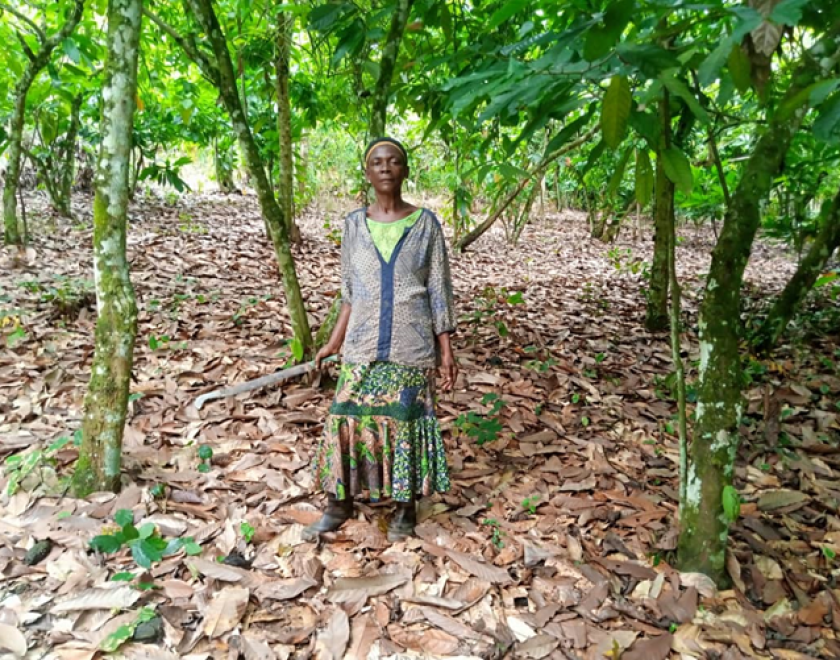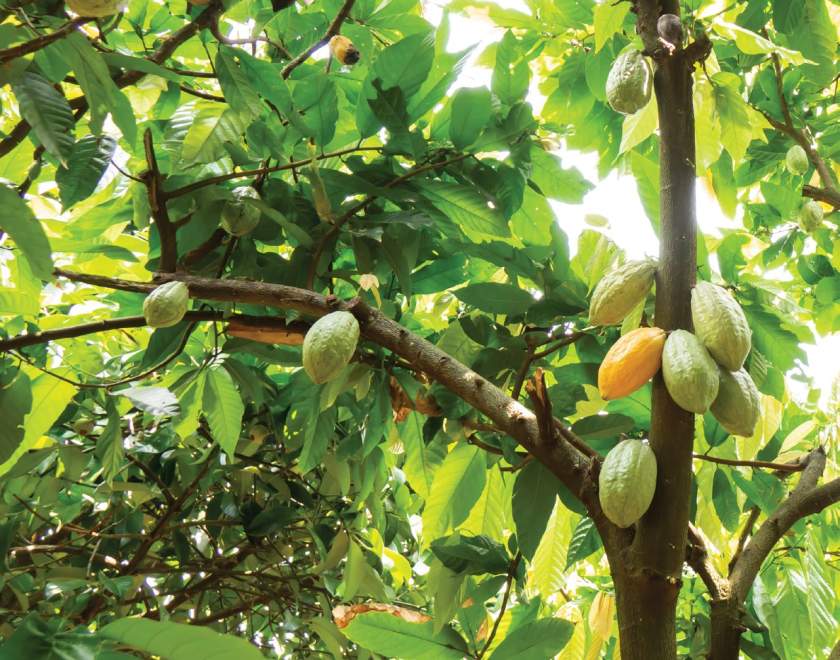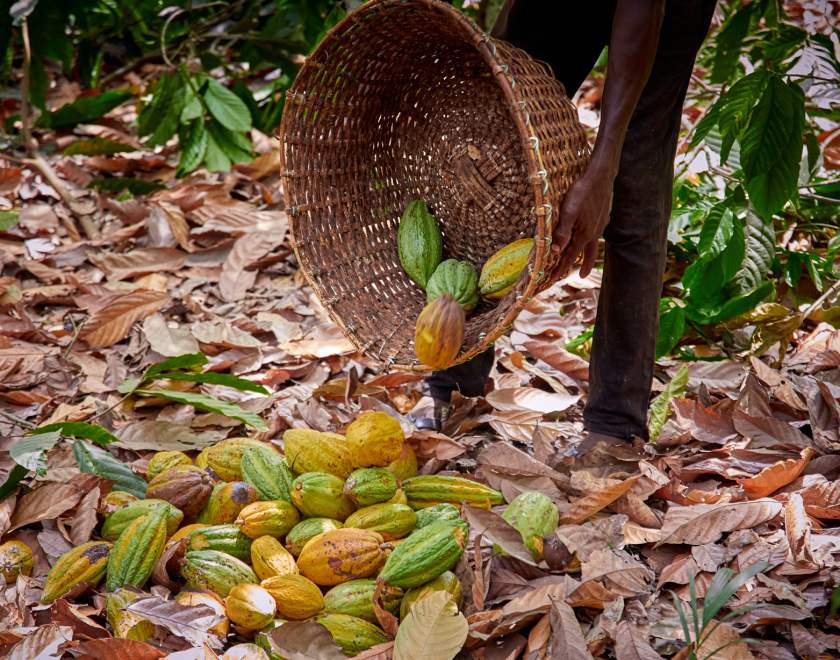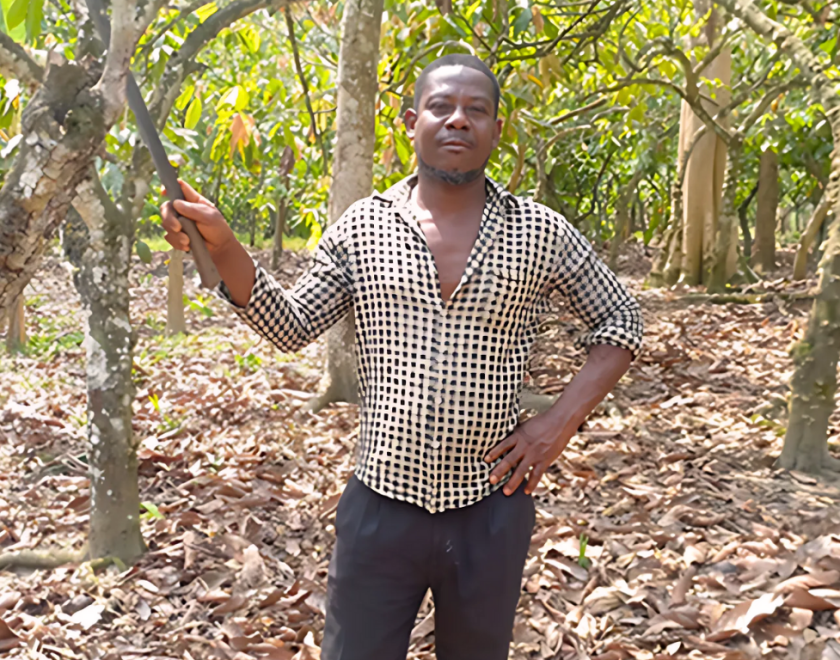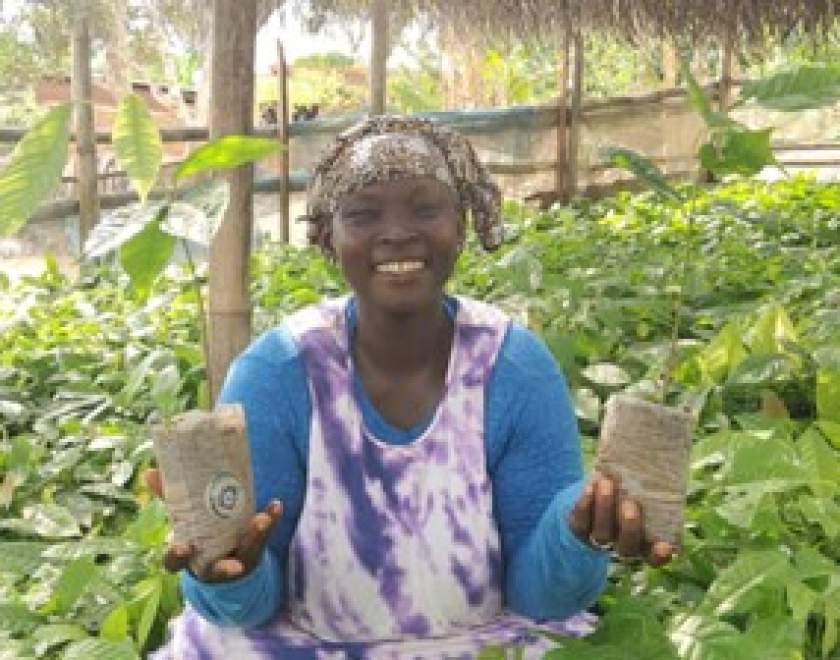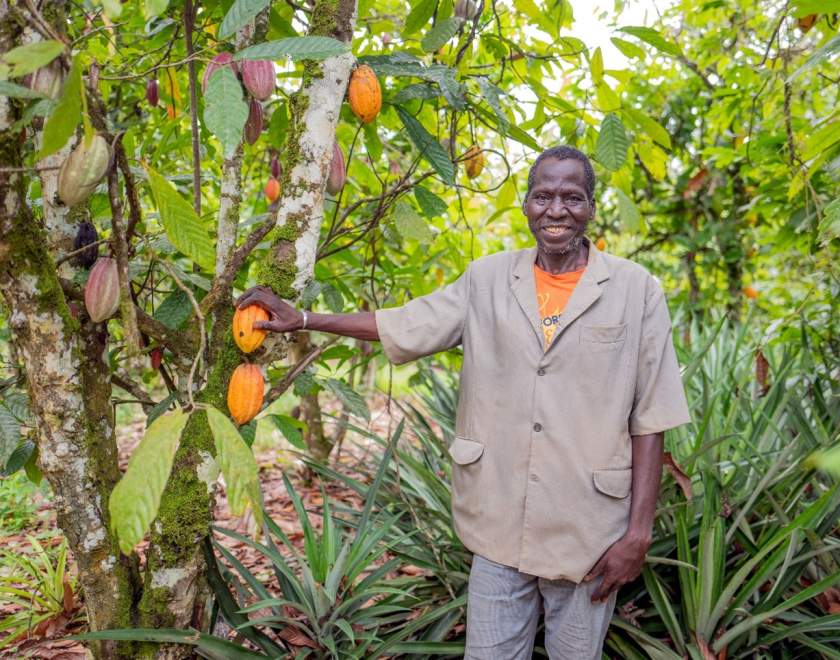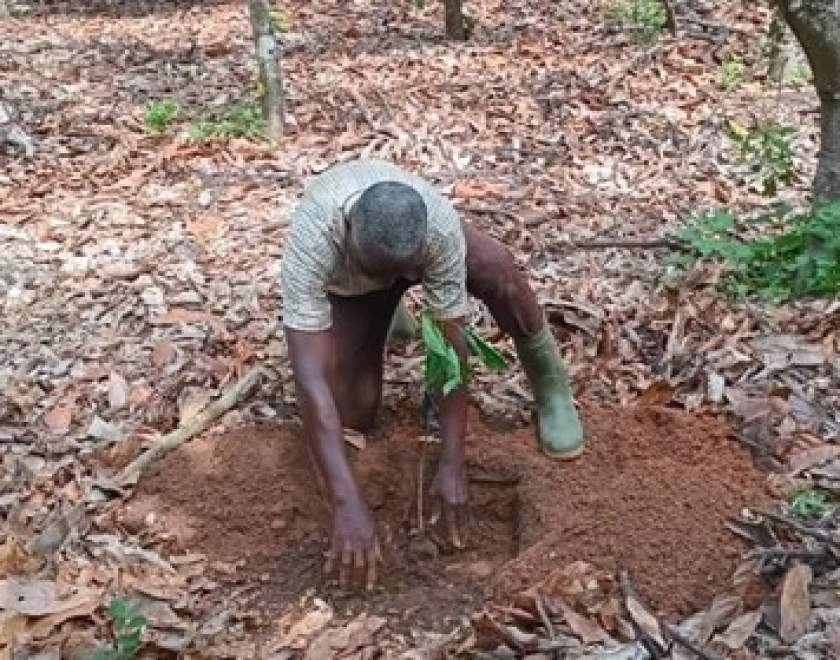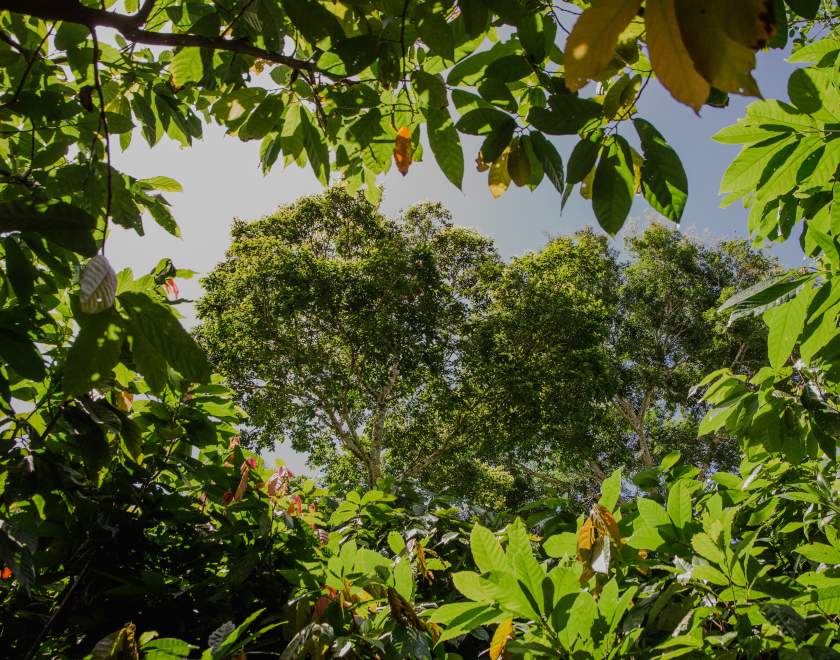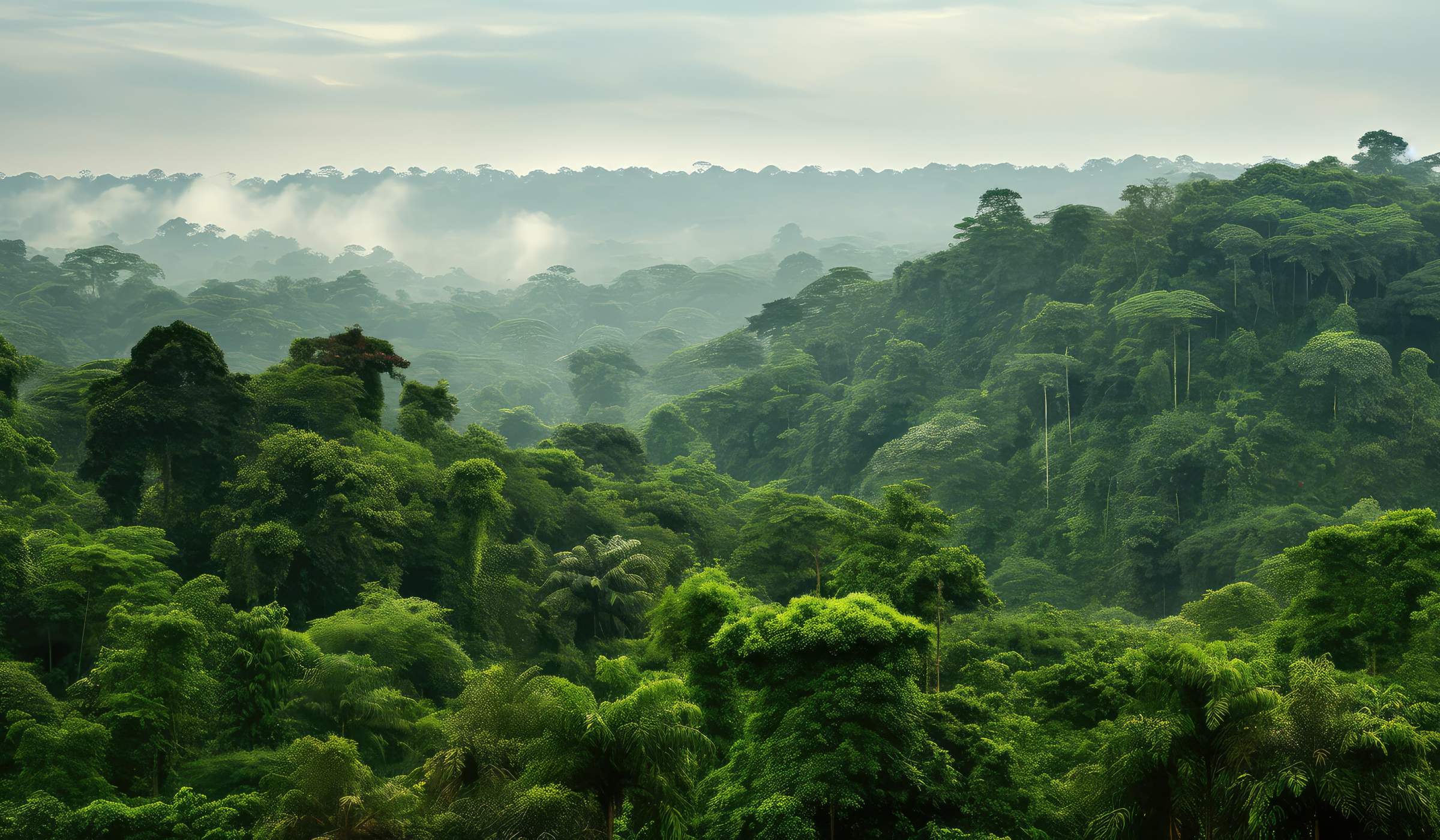
The Cocoa & Forests Initiative (CFI) is the first and largest sector-wide public-private partnership for the cocoa sector.
The governments of Côte d’Ivoire and Ghana are working side-by-side with 35 cocoa and chocolate companies to drive toward forest protection and restoration.
So how are they working on the ground to make that happen? New CFI country reports for both Côte d’Ivoire and Ghana reveal the progress that took place in 2023.
Here’s a look at some highlights from those reports – and how the World Cocoa Foundation (WCF) is continuing to advance the work on interrelated issues going forward.
1. Helping drive cocoa traceability
In 2023, 83% of directly sourced cocoa from companies participating in CFI was traceable to the plot level in Ghana. In Côte d’Ivoire that figure was 82%. Despite supply challenges that required sourcing cocoa from a larger number of producers, these traceability figures have remained relatively stable.
Government agencies and their partners in both countries also continued to develop national traceability systems that will help ensure cocoa grown there meets the requirements of the European Union Deforestation Regulation (EUDR) at the beginning of 2025. These efforts are expected to yield higher traceability figures next year.
In Ghana, COCOBOD in collaboration with stakeholders and development partners including the EU and GIZ has piloted the Ghana Cocoa Traceability System (GCTS) in two districts. The pilot has been largely successful and COCOBOD is poised to roll out a national coverage of the system in 2025.
In Cote d’Ivoire CCC has deployed the traceability system in more than 700 cooperatives, with a target of 1,000 (for a sample of 200 registered farmers in each). The generalization will stem from enrolled cooperatives by expanding internal members coverage. 800.000 farmer id cards out of 900.000 already produced have been distributed, with both activities set to continue until complete coverage of 1.1 million of farmers.
“To help make sure the cocoa sector is ready for EUDR, this month WCF launched a comprehensive deforestation risk assessment methodology for our members to use,” said Hannah Ward, WCF’s Environment Director. “This is an exciting and important step forward as we deepen cocoa traceability and help prevent deforestation.”
It’s the first authoritative methodology of its kind for the cocoa supply chain, and it offers step-by-step technical guidance on how to gather and clean farm polygon data, compare against forest baseline sources and detect deforestation.
2. Prioritizing landscapes and forests
CFI is fostering collaboration between the public and private sectors to protect forests, create clear planning for land use and incentive farmers for conservation.
In Côte d’Ivoire, work has begun in the Yapo-Abbé and Bossématié landscapes on comprehensive land-use assessments, stakeholder engagement and baseline studies. Meanwhile, the Classified Forest in Cavally – another of the six CFI priority landscapes – has been upgraded to a nature reserve. This enhances its conservation status. Collaboration in Cavally has expanded with new partners, as Touton and CocoaSource join Nestlé and Earthworm. You can read more here about how WCF member companies are driving progress on CFI-related topics.
In Ghana, similar efforts are underway in the Asunafo-Asutifi landscape, with stakeholders jointly defining a landscape management plan. This kind of multistakeholder engagement and commitment is key to driving change in a complex environment – which was one of the major lessons learned from CFI in the past year.
“WCF strongly supports progress to CFI’s landscape approach and will continue to do so in the years ahead. We are convening stakeholders to gain alignment and put plans in motion,” Hannah said.
3. Climate adaptation and mitigation
Both countries continue making progress toward positive carbon impact and climate adaptation, including through engagement with the private sector. Côte d’Ivoire is actively developing its carbon policies in line with the U.N. Framework Convention on Climate Change (UNFCCC) National Determined Contributions. And Ghana received its first result-based payment of nearly $5 million from the World Bank’s Emissions Reduction Programme, with the largest share going to Community Resource Management Areas (CREMAs) and farmer groups.
In Abidjan this June, WCF helped convene the public and private sector to further the conversation on a carbon regulatory framework for Côte d’Ivoire, in addition to discussing other CFI-related topics.
“As someone who was in the room, it was really exciting to see the engagement and ownership of everyone involved. Getting the public and private sectors together around the table was key,” Hannah said.
Meanwhile, WCF is also helping enable the private sector to make a positive impact on cocoa-related carbon reductions, for example through the forthcoming launch of a comprehensive greenhouse gas (GHG) accounting methodology.
4. Forest restoration efforts
In total, CFI helped distribute approximately 10 million multipurpose tree seedlings to cocoa producers in Côte d’Ivoire and Ghana in 2023.
In Ghana, the government is helping drive this effort through Green Ghana Day. Started by Ghana’s Ministry of Lands and Natural Resources in 2021, Green Ghana Day is a way to promote awareness and participation in planting trees as a means of forest restoration. In addition to mitigating climate change, it also helps enhance livelihoods in rural communities, as many of the trees planted can provide additional sources of income.
WCF and CFI signatory companies participate in events connected to Green Ghana Day, including a demonstration tree planting attended by Mawuli Coffie, WCF’s Ghana country director. This year, WCF is supporting Green Ghana Day with 150,000 trees to be planted in cocoa-growing communities.
“Whilst policy alignment is critical, initiatives like Green Ghana Day are also a wonderful way to tangibly bring the mission of CFI to life in the communities where it matters most,” Mawuli said. “Seeing farmers, community members and schoolkids all embrace tree planting is amazing, as ultimately they will also be at the heart of ensuring the future survival of critical forests.”

